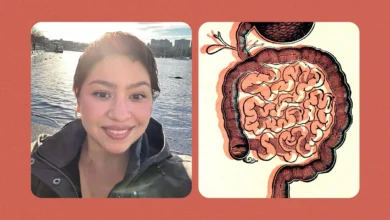Peñiculs Unveiled – Understanding Their Cultural and Modern Significance

Introduction to Peñiculs
Peñiculs hold a place of importance in different cultures around the world. These intricate items, crafted with care, are often seen as more than just objects; they are symbols of tradition and artistry. In this blog post, we will explore the fascinating world of peñiculs, their history, and their relevance in contemporary society. By the end of this article, you’ll have a thorough understanding of what peñiculs are, how they’re made, and why they matter today.
The History of Peñiculs
Peñiculs have a rich history that dates back centuries. Originating from ancient civilizations, these items were initially created using natural materials found in the surrounding environment. Over time, the methods of creating peñiculs evolved, incorporating new materials and techniques. Early peñiculs were often used in rituals, as status symbols, or as practical tools in daily life. Their significance and usage have changed over the years, but their cultural importance has remained constant.
In ancient times, peñiculs were often handcrafted by skilled artisans who passed down their techniques through generations. These artisans were highly respected members of their communities, as their work often held spiritual or societal importance. Different regions developed their unique styles and methods, contributing to the diverse array of peñiculs we see today.
With the advent of trade and exploration, peñiculs began to spread beyond their regions of origin. This exchange of ideas and techniques led to further innovations and adaptations, enriching the tradition of peñicul-making and allowing it to flourish in new cultural contexts.
The Art of Making Peñiculs
Creating peñiculs is an art form that combines traditional craftsmanship with modern innovation. The process typically begins with selecting the right materials, which can include everything from natural fibers and metals to synthetic substances. Once the materials are chosen, the artisan will begin the intricate process of shaping, weaving, or assembling the peñicul.
Traditional methods of making peñiculs often involve a high level of manual skill. Techniques such as hand-weaving, carving, or metalworking require precision and patience. These traditional methods are still practiced today, often as a way to preserve cultural heritage and maintain high standards of craftsmanship.
Modern methods of creating peñiculs have introduced new technologies and materials into the process. Automated machinery can replicate traditional designs with a high degree of accuracy, while synthetic materials can offer new possibilities in terms of durability and aesthetics. Despite these advancements, many artisans still prefer traditional methods for their authenticity and unique character.
Peñiculs in Contemporary Society
In today’s world, peñiculs continue to play a significant role in various aspects of life. They are often used in art, fashion, and design, bringing a touch of tradition to contemporary aesthetics. Designers and artists draw inspiration from traditional peñicul designs, adapting them to modern tastes and contexts.
In fashion, peñiculs can be seen in accessories, clothing embellishments, and even footwear. Their intricate designs add a unique and personal touch to modern fashion, bridging the gap between tradition and trend. Many fashion houses collaborate with traditional artisans to create pieces that honor cultural heritage while appealing to contemporary consumers.
In the world of art and design, peñiculs are often used as decorative elements or as the main focus of an artwork. Their detailed craftsmanship and cultural significance make them a popular choice for artists looking to create pieces with depth and meaning. Interior designers also incorporate peñiculs into their projects, using them to add texture and interest to spaces.
The Symbolism of Peñiculs
Peñiculs are often imbued with deep symbolism, reflecting the cultural values and beliefs of the communities that create them. Different designs and colors can convey various meanings, from protection and prosperity to love and unity. Understanding the symbolism of peñiculs can provide insight into the cultural context in which they were created.
In many cultures, peñiculs are seen as protective talismans. They are believed to ward off evil spirits, bring good luck, or provide spiritual protection. These protective qualities are often represented through specific designs or patterns, which hold symbolic meaning within the culture.
Peñiculs can also symbolize social status or identity. In some cultures, wearing a particular type of peñicul can signify membership in a specific community or social group. The materials, designs, and craftsmanship of the peñicul can indicate the wearer’s status or wealth, making them important symbols of identity and belonging.
Global Peñicul Festivals and Events
Around the world, numerous festivals and events celebrate the art and culture of peñiculs. These gatherings provide a platform for artisans to showcase their work, share their techniques, and connect with other enthusiasts. They also offer an opportunity for the public to learn more about the cultural significance of peñiculs and appreciate their beauty.
One such event is the International Peñicul Festival, held annually in [Location]. This festival features exhibitions, workshops, and performances that highlight the diversity and creativity of peñicul-making traditions. Artisans from different regions come together to display their work, exchange ideas, and celebrate their shared heritage.
Another notable event is the [Event Name], which takes place in [Location]. This event focuses on contemporary interpretations of traditional peñicul designs, showcasing how modern artists and designers incorporate peñiculs into their work. It also includes panel discussions and lectures on the cultural and historical significance of peñiculs, providing a deeper understanding of this art form.
Conclusion and Call
Peñiculs are more than just decorative items; they are a rich cultural tradition that spans centuries and continents. From their historical roots to their modern applications, peñiculs continue to captivate and inspire. Whether used in fashion, art, or everyday life, they carry a piece of cultural heritage and artistic expression.



